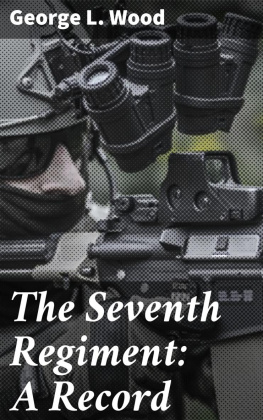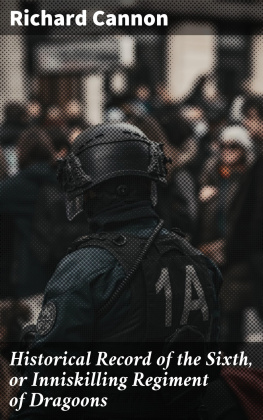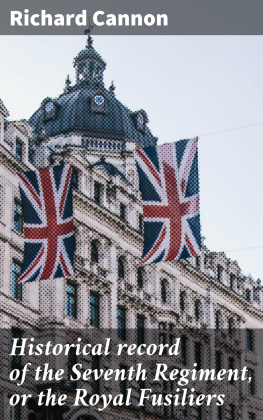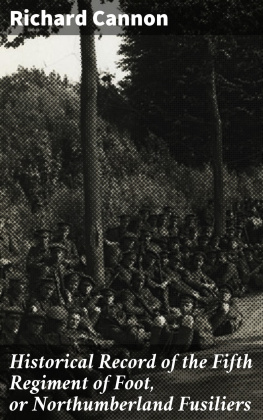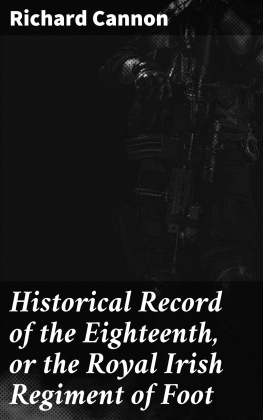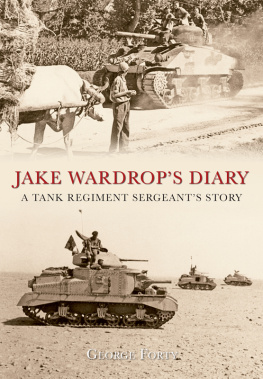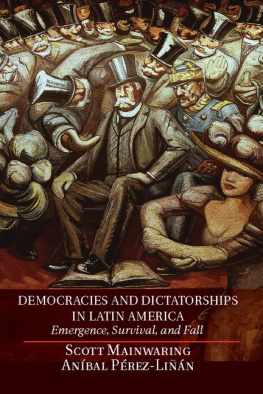A REGIMENTAL HISTORY OF THE 1ST BATTALION DEVONSHIRE REGIMENT DURING THE BOER WAR 1899-1902
PREFACE
BY LIEUT.-GENERAL W. KITCHENER
Experience we all know to be a valuable asset, and experience in war is the most costly of its kind. To enable those coming after us to reconstruct the picture of war, Regimental Histories have proved of infinite value. That such a record fills a sentimental want hardly requires assertion.
My first feelings on being honoured with a request from the Devonshire Regiment to write a preface to the account of their "Work in South Africa, 1899-1902," were, I confess, How could I refuse so difficult a task gracefully? However, on further consideration it seemed to me that undoubtedly such a preface should be written by some one outside the corps itself. Onlookers, as the saying goes, often see most of the game, and, being free from personal bias, can often add something to what those engrossed in the meshes of life's details can only appreciate from a narrower point of view.
From this standpoint, and as I was the General under whom the 1st Devons served longest in South Africa, it seemed obviously my duty to attempt the task.
The "Work of the 1st Battalion of the Devonshire Regiment" is portrayed in these pages. It therefore only remains for me to add, for the benefit of coming generations, what manner of men these were, who by their dogged devotion to duty helped to overcome the Boer. Associated as one was with many corps in the close intimacy of veldt life, it was a study of the deepest interest to note the individuality that characterized each, and which was often as clearly and as well defined as that of the men with whom one daily came in contact.
During the many months of our intimate association, and in the varied situations that presented themselves, I cannot call to mind any single occasion on which the Devons were ever flurried or even hurried. Their imperturbability of temper, even under the most trying conditions, could not be surpassed.
Another characteristic of the corps was its inherent thrift. They were, in fact, essentially a "self-help" corps. When a flood came and washed away the bridge leading to the picket line, no sapper was required to show them how to throw a suspension bridge above the flood from tree to cliff. It was characteristic of the Regiment that they carried out in war their peace training, never allowing the atmosphere of excitement to distort their actions.
If we take Elandslaagte, Wagon Hill, or any of the hundred and one ticklish night operations in which they took part, this trait will be ever noteworthy, that they acted as was to be expected of them, and made no fuss of having done so.
We have all read realistic descriptions of troops on the march in South Africa, the writer using all his cunning to depict the war-worn dirty condition of his heroes, seeming to glean satisfaction from their grease-stained khaki. It must be admitted that the South African War is responsible for a somewhat changed condition of thought as regards cleanliness and its relation to smartness. No such abstraction disturbed the Devons; a Devon man was always clean. Individuals of some corps could be readily identified by their battered helmets or split boots; not so the Devons. No helmet badge was necessary for their identification, and the veriest tyro could not fail to recognize at any time the crisply washed Indian helmet cover.
It may be open to question whether it is for good or for evil that we should broaden our views of what goes to make a smart and useful fighting man, but the regimental system of the Devons was for no innovation of a careless go-as-you-please style. I thus lay stress on the individuality of the Devons in South Africa, because it was this individuality of theirs, born of their regimental system, which enabled them to claim so full a share in the success of that long-drawn-out campaign.
No one can quite appreciatively follow the story of the work of the Devons, unless he realizes the intense feeling of comradeship that animates these West-country men. To work with Devonshire men is to realize in the flesh the intensity of the local county loyalty so graphically depicted by Charles Kingsley in his Westward Ho! and other novels.
In conclusion, let me add, a more determined crew I never wish to see, and a better regiment to back his orders a General can never hope to have.
(Signature - Walter Kitchener)
DALHOUSIE, May, 1906.
PREFACE
BY THE AUTHOR
The story as told is an everyday account and a record of the work of the men of the 1st Battalion Devonshire Regiment during the South African War.
It exemplifies the devotion to duty, the stubbornness in adversity, and the great fighting qualities of the West-country man, which qualities existed in the time of Drake, and which still exist.
A repeating of their history of the past, a record of the present, and an example for the generation to come.
CHAPTER I
EVENTS LEADING UP TO THE SIEGE OF LADYSMITH
1899
On returning from the North-West Frontier of India at the close of the Tirah Expedition, 1897-8, the 1st Battalion Devonshire Regiment, which had served with distinction under the command of Colonel J.H. Yule in the campaign against the Afridi clans, was ordered to proceed from Peshawar to Jullunder, at which place it was quartered in 1898 and in the summer months of 1899, during which time certain companies and detachments were furnished for duty at Dalhousie, Kasauli, and Ghora Dakka (Murree Hills), and located during the hot weather at these places.
Towards the latter end of August, 1899, news from South Africa appeared ominous, and war seemed likely to break out between England and the Transvaal.
On the 8th September, 1899, confidential instructions were received from army head-quarters at Simla ordering the Regiment to get ready to move at short notice to South Africa, and a few days later further orders were received to entrain on the 16th September for Bombay en route to the Transvaal, which country the Regiment was destined not to reach for some months, and then only after severe fighting.
The companies quartered at Dalhousie and Ghora Dakka with difficulty joined the head-quarters at Jullunder before the 16th, and the following marches are worthy of record:
The Dalhousie detachment marched to Pathankote, a distance of 54-1/4 miles, in two days. Major Curry, who was in command, gave each man a coolie for his baggage, and ordered the men to get to Duneera the first day the best way they could. At Duneera they halted for the night, and the next day pushed on in the same manner to Pathankote, where they immediately entrained and proceeded to Jullunder.
The Ghora Dakka detachment under Lieutenant Emerson marched to Rawal Pindi, a distance of fifty-four miles, in two days, and then entrained for Jullunder.



